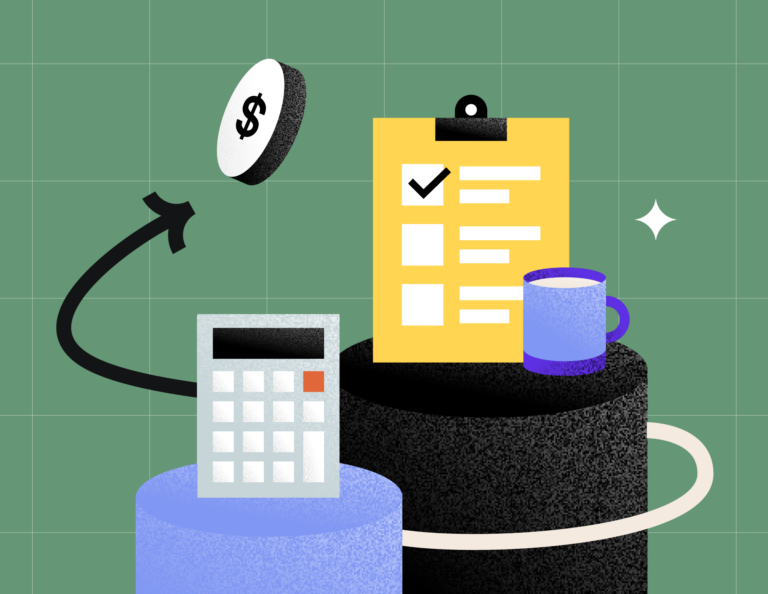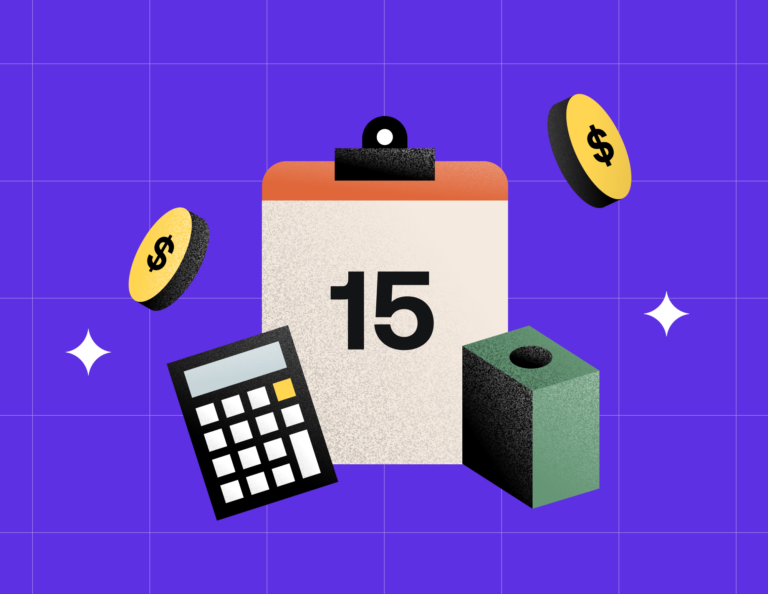
When I started my new business, I knew money would likely be tight while I got things off the ground, but I also knew I didn’t want to continually ride the revenue waves in business. I had just spent the past year and a half overseas without pay and had no full-time job to provide a safe foundation. I was starting completely from scratch.
I had to find other ways to bring in money to pay the bills.
I met with a recruiting company who was able to place me in a handful of short-term positions that were specific to my skills – small business accounting and bookkeeping using QuickBooks Online accounting software. I provided paid childcare at a church. These roles kept me busy but weren’t paying quite enough to make ends meet.
Making the shift to full time
As my business grew, I started saying “no” to the opportunities that weren’t growing my business and began spending more time on things I loved. When I realized I could finally dive completely into consulting full-time, I was thrilled!
But after a couple of years, I noticed a distinct slow-down in clients during certain months of the year.
Sometimes these slowdowns were perfectly timed – right after a busy season when I needed a break! But fewer clients knocking on my door meant less income. I wasn’t planning to pick up another temp job – I knew I needed to make a better plan.
Managing revenue waves in business finances
Have you experienced temporary lulls in your business?
If you haven’t, congratulations, you’re a unicorn business! Unless you’re running a subscription-based business and have a very loyal customer base, you’ll likely experience some ups and downs when it comes to cash flow.
During your busy season, it’s hard to believe things could slow down. You’re signing contracts left and right. You can’t keep up with inquiry emails. Deposits are being paid and your bank balance is going up, up, up.
Then suddenly … crickets.
One of the times this happened to me, I actually searched online for my website to double-check it was still up and functional because it was so quiet!
When the business inquiries lull, don’t panic!
This dilemma hits business owners across all industries. You are not alone, and you didn’t scare everyone away.
So, how can you ensure your business survives and thrives during the slow months?
Learn to ride the wave
As tempting as it may be to take all of the cash surplus in your business account during the busy seasons, transfer it to your personal account and go on vacation – that may not be the best idea long term.
After a couple years of business, you will start to see the ebb and flow of clients and your cash on hand. You’ll be able to look at your bank account and the calendar and say, “I may not need this cash this month, but in 4 months when it’s off-season, I’ll need some cushion.”
The best thing to have when your bank balance starts to grow is a plan.
A plan for what the money will be used on, and a plan for where the money will go until that time.
Let’s dig in.
-
Take a look at the past and establish a plan to manage revenue waves in business
How do you spend your business cash?
- Do you make payments to vendors, subcontractors or suppliers for services, materials or supplies (i.e. business deductions)?
- Do you make payments to yourself (are you a sole proprietor taking draws from your business revenue or an S-Corp owner getting a paycheck?)
- Do you have any loan payments?
Payments to vendors, subcontractors, or suppliers
Look back at where you’ve spent money in the past and how much you paid.
This is where financial statements come in handy. If you’re using an accounting software, you’ll want to look at your Income Statement or Profit & Loss Statement. This will tell you where you spent money on vendors, subcontractors, suppliers and payroll.
If you can view this report separated by month – even better! This will help you see the cash out-flows each month for your prior years.
Payments to yourself
I often ask my clients two questions:
- How much do you need to live on?
- How much did you pay yourself last year overall?
Sometimes you’re able to pay yourself more than you need to live, sometimes you’re not.
Ask yourself these questions. Determine the monthly amount you need to pay your bills and cover all the basic necessities. Then set a strict schedule to pay yourself this specific amount every month for the next year. Reevaluate this amount every 12 months or so.
How to know how much you need to make (an example)
If you know you need at least $30,000 per year to pay all of your bills, this means you’ll pay yourself $2,500 each month (the math is easy: $30,000/12 months).
Or if you look back at what you paid yourself in the past year or two, and it happens to be closer to $45,000, that means you paid yourself an average of $3,750 each month ($45,000/12).
It looks great on paper, but in reality might actually look like making $10,000 during your busy season and absolutely nothing during the quiet season.
But, our goal is a steady stream of income to your personal finances.
How to apply this to your business
If you take a look at your current business and can see it your revenue is comparable to previous years, then it may be a good sign you’ll be comfortable choosing $3,750 per month. However, if you were strapped for cash most of the time in the prior years, maybe you want to find an amount in-between $2,500 and $3,750.
The main goal is stability.
By choosing an amount that is low enough to attain throughout the entire year, but not too low where you have excess cash even after paying yourself and others.
I recommend starting yourself on this payment schedule in the height of your cash surplus. Don’t pay yourself more just because you have the cash! Remember: we’re adding a cushion for the off-season.
Payments on loans
Usually when you have a loan, there will be a set repayment schedule. That is the monthly amount you are required to pay on the loan. If you already have a plan to make larger payments, you can use that amount instead!
If you have multiple loans, you’ll want to make sure you factor in each monthly payment.
-
Put your plan into action to manage revenue waves in business
Congratulations! You’ve established a plan. You’ve taken a look at your finances, determined how much you need to live on, and you know what you’re going to do with the cash surplus!
The next big question is…what do you do with that cash until your off-season?
How to Plan for Off-Season in Business
I always recommend this to my clients. It’s a great way to keep everything separate. Plus, you may even earn interest!
It’s up to you how you organize the savings accounts, but I recommend having one savings account solely dedicated to paying yourself. You might even choose to have one or two more accounts to help you plan for future expenses you anticipate paying during the slow months.
How will this look?
Let’s say, for example, that you just had a GREAT month! You’ve added up all of the revenue, paid yourself, made contributions to your loans, paid all of your bills…and you STILL ended up with $12,000 cash.
According to your new monthly plan, you know you need:
- $1,200 per month to pay back your loans
- $5,700 for business expenses
- $3,750 for personal bills, groceries and home expenses (this is your pay)
That’s $10,650 of cash out-flow each month.
3 Savings Accounts Business Owners Need
- Transfer $3,750 into a savings account dedicated to paying yourself.
- Transfer $5,700 into a savings account dedicated to monthly business deductions.
- Put $1,200 into a savings account dedicated to paying loans.
You can either leave the rest in your main checking account or transfer additional funds to any of these accounts as you like.
Your goal will be to start doing this during a busy season when cash is coming in abundance, so it’s easier to build up these storehouses for when you need to draw on them.
If this was the first month of your busy season, and you know it’s going to stay busy for another 3-4 months, but you want to make sure you have at least 3-4 months of off-season cash in savings, you can build up your savings accounts by depositing little by little each month.
At the end of each month, you will be able to see how much you have saved up for the quiet season. You’ll be able to pay yourself consistently throughout each season and pay your other financial responsibilities.
This will give you peace of mind, knowing you’re setting your business up for success.
Planning for State Sales Tax
Sidenote: If your business collects state sales tax, I recommend transferring that into a separate savings account specific for taxes right away! Some businesses are only required to make payments quarterly or annually, so it’s helpful to have that cash set aside right away so you don’t need to come up with it later!
Another option (often offered by many states) is to set up payments toward your sales tax return, even though you don’t need to file it yet. For example, if you file your return annually, most states will allow you to pay early throughout the year. This is really helpful if you don’t want to manage too many savings accounts!
Say goodbye to feast or famine mentality in your business finances and hello to stability!
You now have the balance you’ll need to ride the ups and downs of your business’ revenue and to business plan for resiliency in finances.
Happy saving, friends!
Looking to increase resiliency in your business? Get our Business Planning for Resiliency Ultimate Guide.
ADD_THIS_TEXT



